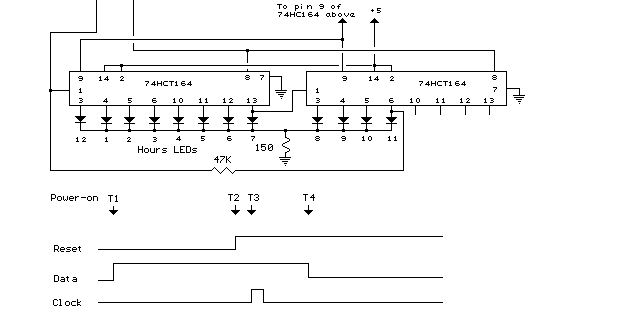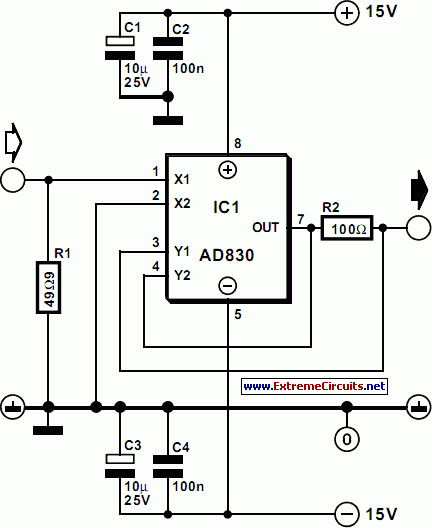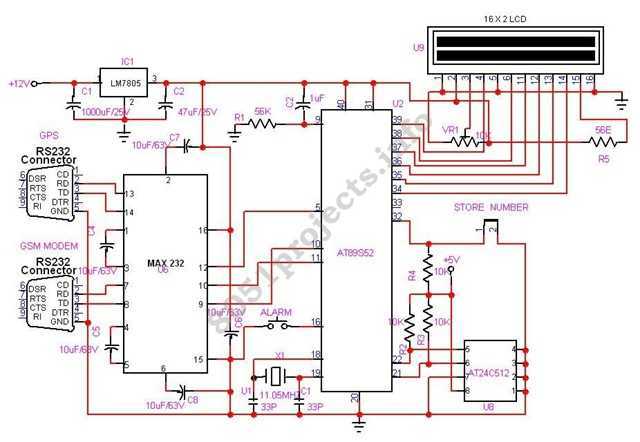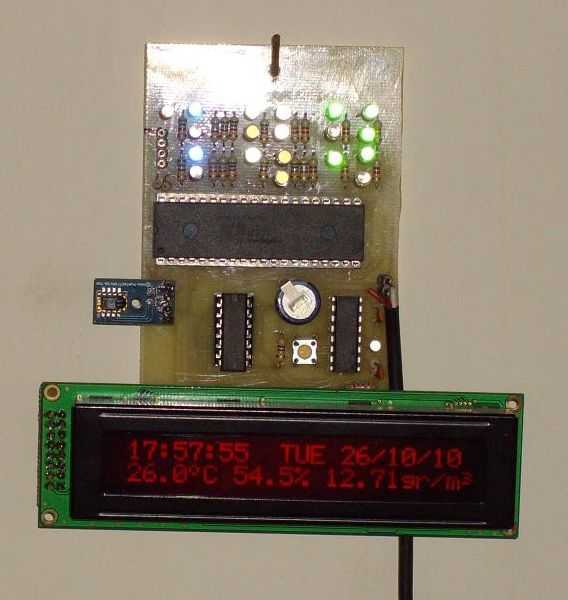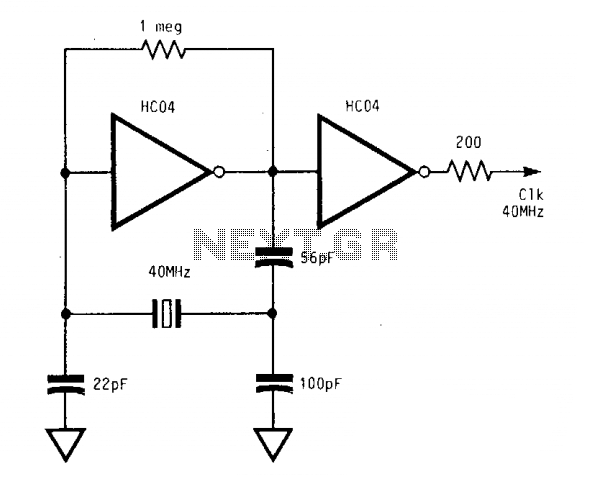
gps driven clock compasss peedo
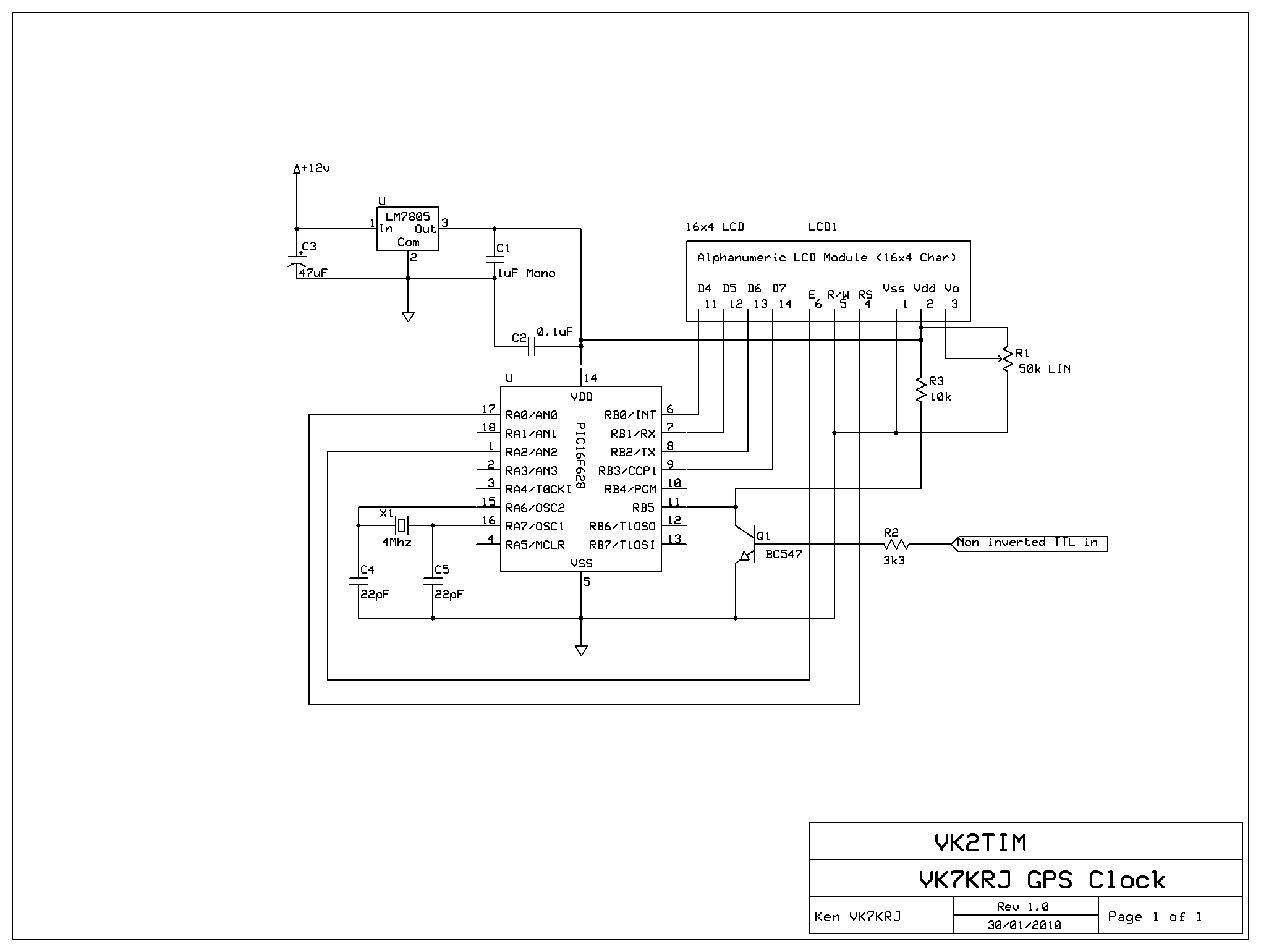
This project is a GPS-based clock that displays the current date, automatically adjusts for daylight saving time, shows current speed, maximum speed, and present heading in degrees relative to true north. The original firmware and concept were developed by Ken, VK7KRJ, who granted permission to utilize his source code and circuit design. Modifications were made to the source code to accommodate a 16x4 display module and the EM 406A GPS engine integrated into the device. Variations in NMEA sentences can occur between different GPS engines depending on the chipset used. The EM 406A operates on a SiRf III chipset, while Ken's original code, created in 2004, was compatible with older GPS units. Adjustments were necessary to prevent the code from loading the $GPVTG sentences from the GPS module, which caused the original firmware to malfunction. Additionally, code was added to allow the unit to log the maximum speed achieved, which remains displayed indefinitely. This feature enhances the utility of the device for tracking the maximum speed of model cars, dirt bikes, or any other vehicles lacking a built-in speedometer.
The GPS-based clock circuit consists of several key components, including a microcontroller, a 16x4 LCD display, and the EM 406A GPS engine. The microcontroller serves as the central processing unit, managing data from the GPS module and controlling the display output. The EM 406A GPS engine receives satellite signals and provides NMEA sentences, which contain crucial data such as time, date, speed, and heading.
The 16x4 LCD display is utilized to present this information clearly to the user. The microcontroller is programmed to parse the incoming NMEA sentences, extracting relevant data while ignoring unnecessary sentences that may cause conflicts, such as the $GPVTG, which was problematic in earlier firmware versions.
To achieve accurate timekeeping and date display, the microcontroller is programmed to automatically adjust for daylight saving time based on the geographical location obtained from the GPS. The speed measurements are calculated from the GPS data, with the maximum speed feature implemented through a simple comparison algorithm that retains the highest speed recorded during operation. This function is particularly valuable for users who wish to monitor the performance of their vehicles over time.
The overall design emphasizes reliability and accuracy, ensuring that the device can operate effectively across various environments and applications. By leveraging the capabilities of the EM 406A GPS engine and the flexibility of the microcontroller, this project exemplifies a practical integration of GPS technology into everyday devices, enhancing the user experience through real-time data display and logging functionalities.This project is a GPS based clock, which also displays the present date, automatically compensates for daylight savings time, displays current speed, and maximum speed, along with your present heading in degrees with respect to true north. The original firmware and concept came from Ken, VK7KRJ, who was kind enough to grant me permission to use hi
s source code and his original circuit idea in this project. I have modified the source code to work with the 16x4 display module that I have used, as well as the EM 406A GPS engine that I have built into the box. I have discovered that from one GPS engine to another, the NMEA sentences can vary slightly, depending on which chipset is used in the GPS engine.
The EM 406A is a SiRf III based GPS, and Kens source code was written in 2004, so it is compatible with older GPS`s, but required modification to work with my SiRf III GPS. I basically had to stop the code from loading the $GPVTG sentences from the GPS module, as this is where the original firmware got stuck.
I also added the code for the unit to log the maximum speed achieved, and keep it on the display indefinately, which makes this unit useful for logging the maximum speed achieved by a model car, or a dirt bike, or any other vehicle not already equipped with a speedo. 🔗 External reference
The GPS-based clock circuit consists of several key components, including a microcontroller, a 16x4 LCD display, and the EM 406A GPS engine. The microcontroller serves as the central processing unit, managing data from the GPS module and controlling the display output. The EM 406A GPS engine receives satellite signals and provides NMEA sentences, which contain crucial data such as time, date, speed, and heading.
The 16x4 LCD display is utilized to present this information clearly to the user. The microcontroller is programmed to parse the incoming NMEA sentences, extracting relevant data while ignoring unnecessary sentences that may cause conflicts, such as the $GPVTG, which was problematic in earlier firmware versions.
To achieve accurate timekeeping and date display, the microcontroller is programmed to automatically adjust for daylight saving time based on the geographical location obtained from the GPS. The speed measurements are calculated from the GPS data, with the maximum speed feature implemented through a simple comparison algorithm that retains the highest speed recorded during operation. This function is particularly valuable for users who wish to monitor the performance of their vehicles over time.
The overall design emphasizes reliability and accuracy, ensuring that the device can operate effectively across various environments and applications. By leveraging the capabilities of the EM 406A GPS engine and the flexibility of the microcontroller, this project exemplifies a practical integration of GPS technology into everyday devices, enhancing the user experience through real-time data display and logging functionalities.This project is a GPS based clock, which also displays the present date, automatically compensates for daylight savings time, displays current speed, and maximum speed, along with your present heading in degrees with respect to true north. The original firmware and concept came from Ken, VK7KRJ, who was kind enough to grant me permission to use hi
s source code and his original circuit idea in this project. I have modified the source code to work with the 16x4 display module that I have used, as well as the EM 406A GPS engine that I have built into the box. I have discovered that from one GPS engine to another, the NMEA sentences can vary slightly, depending on which chipset is used in the GPS engine.
The EM 406A is a SiRf III based GPS, and Kens source code was written in 2004, so it is compatible with older GPS`s, but required modification to work with my SiRf III GPS. I basically had to stop the code from loading the $GPVTG sentences from the GPS module, as this is where the original firmware got stuck.
I also added the code for the unit to log the maximum speed achieved, and keep it on the display indefinately, which makes this unit useful for logging the maximum speed achieved by a model car, or a dirt bike, or any other vehicle not already equipped with a speedo. 🔗 External reference
